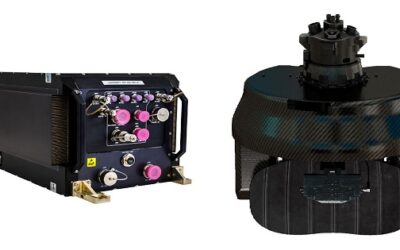Protecting Wideband RF Systems in Congested Electromagnetic Environments
Today’s electromagnetic (EM) spectrum is a scarce resource that is becoming increasingly congested and contested as friendly, unfriendly and neutral entities vie for available spectrum resources at any given time, location and frequency. Within the US DoD, radio frequency (RF) systems, such as communications networks and radar, must operate within this congested environment and contend with mission-compromising interference from both externally-generated signals (from adversarial jamming, for instance) and self-generated interference, such as that created by a radio’s own transmitter. A desire to support wideband EM spectrum operations also adds to the burden, as current approaches to mitigating wideband receiver interference are sub-optimal and force compromises around signal sensitivity, bandwidth usage and system performance. Further, in the case of self-interference, traditional mitigation approaches such as antenna isolation alone are often insufficient to protect wideband receivers.
“Protecting our wideband digital radios from interference and jamming in the unpredictable EM environment is critical to our defence capabilities and has prompted the exploration of wideband tuneable circuit architectures to support cognitive radio technology,” explained Defense Advanced Research Projects Agency (DARPA) Program Manager, Dr Timothy Hancock. “Unlike narrowband radios that rely on switching between pre-planned filtering and narrowband signal cancellation, today’s wideband radios lack the RF front-ends that could help mitigate harmful signals before they reach the sensitive receiver electronics.”
The Wideband Adaptive RF Protection (WARP) programme seeks to enhance protection for wideband receivers operating in congested and contested EM environments. The goal is to develop wideband, adaptive filters and analogue signal cancellers that selectively attenuate – or cancel – interference to protect wideband digital radios from saturation. Saturation occurs when the power level of a received signal exceeds the receiver’s dynamic range – or the range of weak to strong signals it can handle. When exposed to interference or jamming, the target WARP components will sense and adapt to the EM environment through intelligent control of adaptive hardware.
To address external interference, WARP will explore the development of wideband tuneable filters that can continuously sense the EM environment and adapt to maintain the receiver’s dynamic range without decreasing signal sensitivity or bandwidth. The research will look at innovative filter architectures supported by state-of-the-art components and packaging to achieve the programme’s target metrics.
“With the WARP filters, the goal is to reduce the effect of large signals without attenuating smaller signals. By attenuating the large signals, a wideband RF system is better able to listen to both weak and strong signals over a wide bandwidth,” Hancock noted.
WARP will also address self-generated inference with the development of adaptive, analogue signal cancellers. “Sometimes a system’s own transmitter is the biggest interferer to the receiver. To avoid this issue, transmitting and receiving at different frequencies has traditionally been commonplace, aided by the use of a frequency duplexer to keep the two bands separate. However, for defence systems there are a number of benefits to transmitting and receiving on the same frequency – such as doubling spectrum efficiency and increasing network throughput. This concept is referred to as same-frequency simultaneous transmit and receive (STAR),” explained Hancock.
The use of same-frequency STAR has been limited due to the relatively few available means of ensuring that transmitter leakage does not interfere with the receiver. To combat this, WARP will explore analogue cancellers that will reduce the transmit leakage before the wideband digital receiver, such that any residual leakage will be sampled and further cancelled in the digital domain.
“Through WARP’s technological developments, our ability to reduce critical interference issues and protect wideband radios will significantly improve. Further, if successful, these technologies will enable the use of software-defined radios (SDR) in congested and dynamic spectral environments – something that is limited today,” Hancock concluded.

























